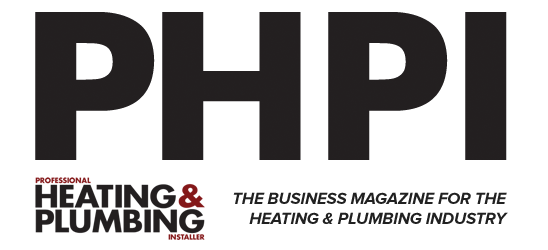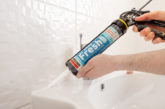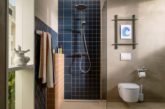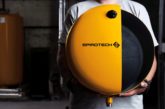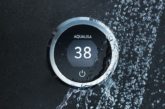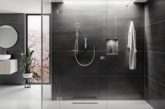
Paul Ravnbo-West, Market Development Manager at Triton Showers, answers some questions around pairing an electric shower with a Waste Water Heat Recovery System (WWHRS).
Q. Why are showers key to improving water and energy efficiency in new homes?
As building fabric is reinforced, hot water production is rapidly becoming the dominant energy load in efficient, low-heat-loss homes. Showers are the largest domestic consumer of water and are responsible for half of hot water demand generated, making them a prime candidate for those looking to make crucial energy and water savings.
Q. Are electric showers more water-efficient than traditional mixers?
Typically, yes. Electric showers operate at lower flow rates than mixers, using less water per minute without sacrificing comfort. This makes them a particularly viable solution for housing developments in water-stressed areas, where local authorities may impose stricter planning conditions, such as limiting water use to less than 110 litres per person per day.
They also eliminate the need to run taps while awaiting hot water, which is one of the most common sources of water waste.
Q. How do electric showers support the goals of the Future Homes Standard (FHS) 2025?
The mandating of heat pumps in new-build homes has been well documented over the years. To facilitate this, hot water cylinders will be needed to store and distribute hot water. These can reach up to 300 litres in size for a larger home with several bathrooms. Electric showers heat water on demand directly from the cold mains supply, allowing for the installation of smaller hot water cylinders, saving money and space.
Q. What is a WWHRS and how does it enhance the performance of electric showers?
A WWHRS captures the heat from used shower water, which is normally lost down the drain, and uses it to preheat incoming cold mains water. This then enters the electric shower unit, reducing the energy needed to reach the desired temperature. An extremely passive process, you could say.
It also helps to maintain a consistent performance, particularly during colder months when mains water temperatures plummet. As a result, this eliminates the perception that as incoming water temperature drops in winter, so does the performance of electric showers.
Q. What are the broader benefits of pairing electric showers with WWHRS?
Lower emissions, first and foremost. By reducing the energy needed to heat water, this duo can significantly cut a household’s carbon footprint. Lower energy consumption subsequently translates to cheaper energy bills for residents, which is certainly welcome news after the volatility experienced in recent years. It also supports grid resilience by lowering peak energy demand, especially during morning and evening usage spikes.
For housebuilders and developers, it offers a practical route to complying with Part L of the Building Regulations – outperforming mixers in key SAP metrics, including the Dwelling Emissions Rate (DER) and Dwelling Primary Energy Rate (DPER).
Q. What are the latest solutions available?
Triton recently launched ENlight® with HeatRepeat®, its first electric shower designed to connect to WWHRS. This can reduce annual energy consumption by up to 51%, water usage by 44% and produce carbon savings of up to 37%, when compared to a mixer shower connected to a WWHRS.
When ENlight® with HeatRepeat® is connected to a WWHRS, the operational carbon emission savings, compared to a mixer shower, can negate its own embodied carbon footprint, including that of the WWHRS, in as little as three months.
Circling back to end-user experience, the shower also delivers a spray of approximately five litres per minute when connected to a WWHRS, improving overall user satisfaction.
Q. What are the installation tips to fitting an electric shower with a WWHRS?
When fitting a ‘compatible’ electric shower, like HeatRepeat®, with a WWHRS, the key is to route the cold mains directly through the WWHRS. The pre-heated water from the outlet of the WWHRS must then be connected so it is the only feed to the inlet of the electric shower (known as System B*) to ensure the inlet temperature stays within the shower manufacturer’s limits (typically up to 32 °C). The shower wastewater must be directed with the correct fall into the WWHRS to achieve optimum efficiency. Always check flow and pressure requirements to avoid compromising shower performance.
*It is important to note that when energy savings are modelled in SAP by a qualified assessor, the system should be assessed as System A (where the electric shower is the water heater).
On the electrical side, installation must comply with BS 7671 and Part P, with cable sizes, MCBs and RCD protection matched to the shower’s rating. Keep electrical cabling separate from drainage routes and ensure the WWHRS is installed in its intended orientation with maintenance access for future cleaning.
Before closing up, test for leaks, verify drainage flow and confirm that the temperature boost matches expected performance. Clear labelling and commissioning checks will help ensure both compliance and long-term reliability.
Image: Triton Showers

